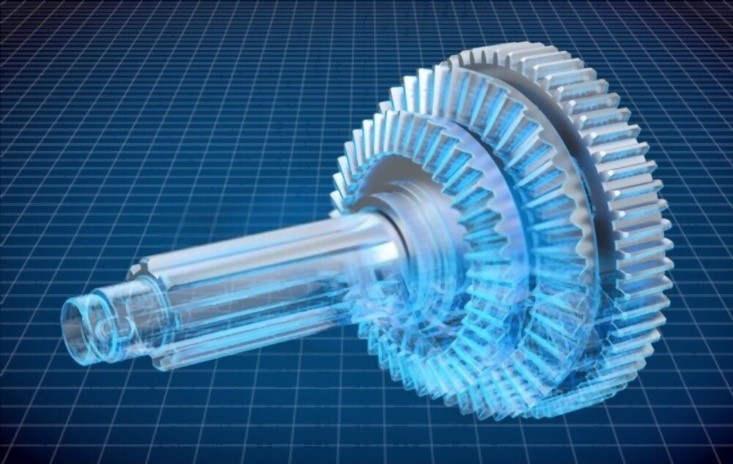Latest News
Reverse Engineering Services and its Benefits

Reverse engineering can also be referred to back or backward engineering. It is a way products such as machines, architectural structures, aircraft, and so on are deconstructed. This is to extract information about their design.
Typically, it involves deconstructing smaller, individual components of a larger product. What it does is that it enables one to know how a product was made so that it can be recreated. You can take these existing parts and make a computer-aided design (CAD) model.
Usually, companies use reverse engineering when there is a need to improve a product but lack sufficient design documentation. It may also be a case of not being able to get a replacement part from the original manufacturer of the equipment.
Reverse engineering is so-called because the process involves working on the original design in a backward way to understand it. However, there is often little understanding about the engineering design method that was used to create the object. You can read further on it here.
The major challenge then is to get a working knowledge of the product. This is done by dissembling it layer by layer and piece by piece. The data collected from the deconstruction is then used for troubleshooting, studying, analyzing and reproducing future models of the product.
It is common to see companies using reverse engineering on old components in electronics such as in connecting cards. It can also be used for printed circuit boards (PCB). Often, the product to be re-engineered is no longer in production. This could be due to a manufacturer being out of the business or no longer offering it.
How the Reverse Engineering Process Works

The process is not just about duplicating a component into a CAD model. It is essential to understand the functions of the component and how it works or interacts with the whole system. The steps that may be involved in the reverse engineering process include:
Capturing the Data
This is the first step in the process. A variety of scanning machines can be used for this depending on the material and its size. When the data is captured, the scanner outputs it in 3D like a triangular mesh. This is manipulated before becoming a CAD file.
Refining the Model
Having obtained the detailed dimensions of the part, it is time to refine them into something final. This is done using a software with automated technology and human manipulation to finish the CAD model. The mesh received from the scanner is turned into a polygonal model and then cleaned up to the required shape.
Manufacturing
After refining, the CAD model is now ready for manufacture. At this point, you may decide to make a 3D print of the model for comparison with the original before mass production. This will enable you to make any adjustments and improvements before mass producing it. You may read more about how the process works here https://insights.globalspec.com/article/7367/how-does-reverse-engineering-work.
Benefits of Reverse Engineering
There are tons of benefits to using the reverse engineering process. Below are a few of them.
It is Useful in Understanding Existing Designs
Reverse engineering provides a way not only to explore existing objects but also to improve on them. This can be a process, a structure, or a part and it helps to bring about discovery and innovation.
It is Useful in the Design of New Products from Existing Ones
To create something new from an existing one, you need to understand how the existing product functions. Reverse engineering provides the visual that is needed to work with outdated systems in creating a newer one. With this, engineers can easily reconstruct the product while maintaining or improving its quality.
It Helps to Discover Vulnerabilities in a Product
One of the perks of working with an existing object is that you can see its faults and make needed corrections. Doing this helps to guarantee the quality as well as the safety of the object.
It Helps to Create Reliable CAD Models for Future Use
One of the things that a reverse engineering process produces is a reliable CAD model. This enables parts to be digitally examined. It also means that it can be useful as a reference in the future. This is if there is a need for an improvement or a change in the design.
It Helps in Creating More Efficient but Less Expensive Products
A successful reverse engineering process brings about innovation that helps to lower the cost of manufacturing. It also makes a product more efficient. Lower manufacturing costs mean that the products will be less expensive.
Do you have a machine or part that needs to be worked on? There are companies that provide reverse engineering services with the right equipment, staff, knowledge and experience that can help you out. They use a range of technologies and services to achieve this for different industries.
Conclusion
The reverse engineering process provides a way to create something new from an existing product. This means that you do not have to despair even if your machines or components seem outdated or no longer produced. You can always get a reputable company to help you produce a new one from the existing one.
Umar Nisar was born and raised in the busy city of Abbottabad. As a journalist, Umar Nisar has contributed to many online publications including PAK Today and the Huffing Post. In regards to academics, Umar Nisar earned a degree in business from the Abbottabad UST, Havelian. Umar Nisar follows the money and covers all aspects of emerging tech here at The Hear Up.
Thanks










